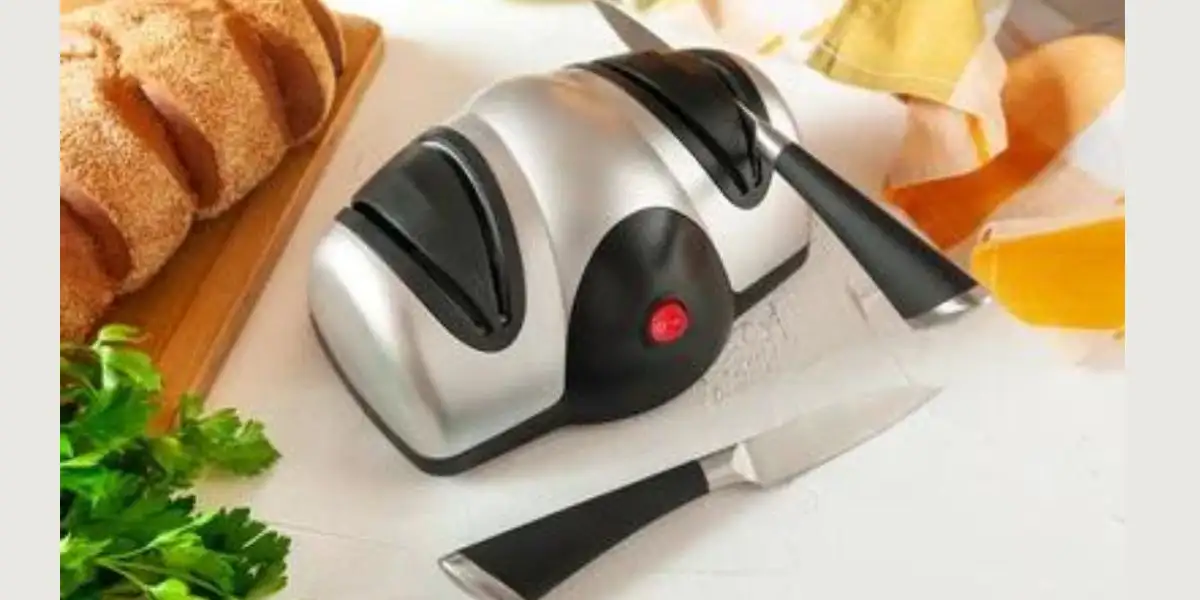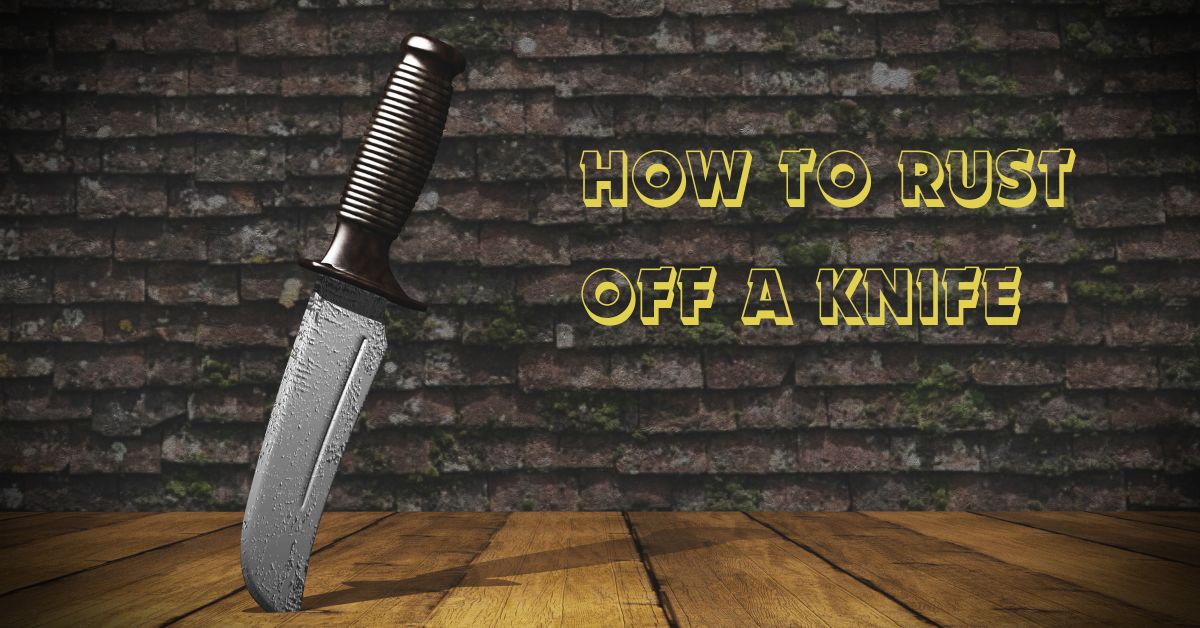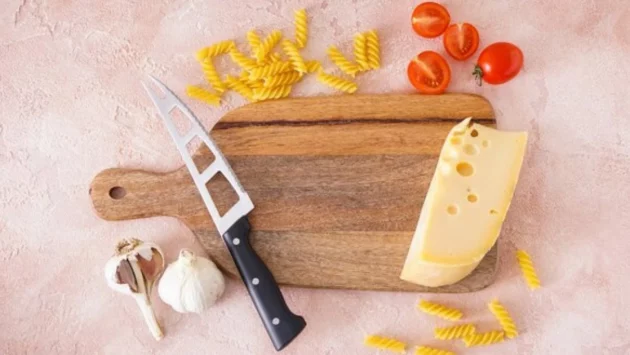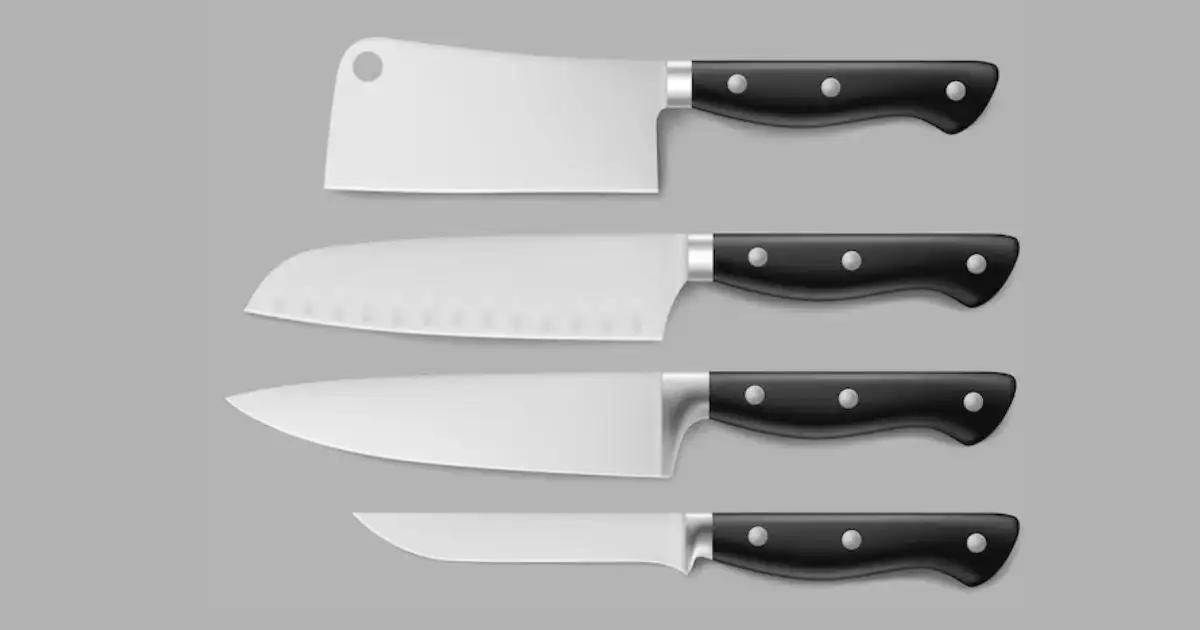Santoku Knife Care 101: Optimal Sharpness with Electric Sharpeners
The Santoku knife, hailed for its versatility and precision in the kitchen, has become a beloved tool for chefs and home cooks alike. Its unique design, featuring a shorter blade and granton edge, makes it ideal for slicing, dicing, and chopping various ingredients with ease. However, the effectiveness of a Santoku knife relies heavily on maintaining a razor-sharp edge.
Enter the electric sharpener, a modern solution to the age-old challenge of keeping kitchen knives in top-notch condition. In this blog, we will explore the intricacies of sharpening a Santoku knife using an electric sharpener.
From understanding the anatomy of Santoku knives to delving into the mechanics of electric sharpeners, we’ll provide a comprehensive guide to help you achieve the perfect edge for your culinary adventures. Let’s embark on a journey to discover the art and science of sharpening Santoku knives with the convenience of electric tools.
Table of Contents
ToggleWhich are the most common methods of knife sharpening?
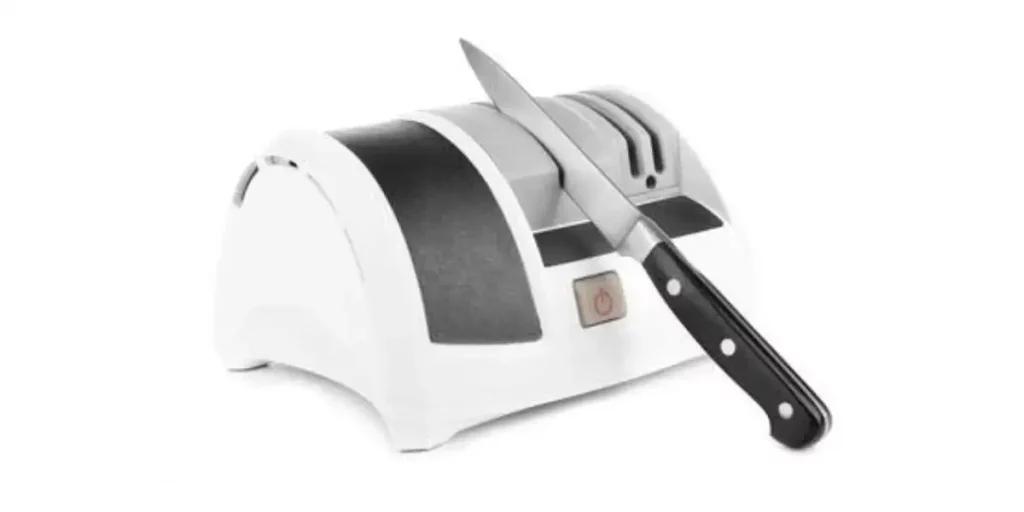
Knife sharpening is a skill that every chef and home cook should master to ensure the longevity and effectiveness of their blades. Several methods exist for sharpening knives, each with its own unique advantages and considerations. Here are some common methods:
Whetstones (sharpening stones):
- Whetstones are natural or synthetic stones with different grit levels.
- Coarse grit is used for initial sharpening, while finer grit hones and polishes the edge.
- It requires proper technique and angle control for effective sharpening.
Honing Rods (Sharpening Steels):
- Honing rods are often confused with sharpening, but they primarily straighten the blade’s edge.
- Regular use helps maintain the knife’s alignment and edge between sharpening sessions.
- Requires proper technique to avoid damaging the blade.
Electric knife sharpeners:
- Electric sharpeners are convenient and easy to use, making them popular among home cooks.
- Typically, they feature built-in sharpening slots with preset angles.
- Suitable for those who want a quick and efficient sharpening process.
- May have limitations for certain knife types, requiring careful selection.
Manual Sharpeners:
- Manual sharpeners come in various designs, including pull-through and handheld models.
- They are generally user-friendly and suitable for maintaining an edge between more intensive sharpening sessions.
- They may have limitations on the types of blades they can effectively sharpen.
Professional Sharpening Services:
- Some individuals prefer to leave knife sharpening to professionals.
- Services may use specialized equipment to achieve optimal results.
- Ideal for those who lack the time or confidence to sharpen knives themselves.
DIY Methods (e.g., Sandpaper, Ceramic Mugs):
- DIY methods are creative solutions for those without specialized tools.
- While not as precise as professional methods, they can be effective in a pinch.
- Require caution to avoid damaging the knife.
Sharpening Systems:
- Sharpening systems consist of guided tools that help maintain a consistent angle.
- They are suitable for individuals who want the precision of whetstone sharpening without the learning curve.
What are the types of knife sharpeners?
Here’s a description of the maximum number of communal types of knife sharpeners:
Honing Rods (Sharpening Steels):
- Description: Honing rods are usually made of steel or ceramic. Contrary to sharpening, they are primarily used for straightening the blade’s edge.
- Use: The knife is drawn along the rod, realigning the edge and maintaining sharpness between more intensive sharpening sessions.
- Advantages: Quick and easy to use, promoting edge alignment and prolonging the time between sharpenings.
Manual Sharpeners:
- Description: Manual sharpeners come in various designs, including pull-through and handheld models.
- Use: Users manually pull the knife through sharpening slots or across a sharpening surface.
- Advantages: Generally user-friendly, providing a compromise between manual control and the convenience of electric sharpeners.
Professional Sharpening Services:
- Description: Professional services are offered by experts who use specialized equipment to sharpen knives.
- Use: Users send their knives to the service, and professionals handle the sharpening process.
- Advantages: Ideal for those who lack the time, skill, or confidence to sharpen knives themselves, ensuring optimal results.
DIY Methods (e.g., Sandpaper, Ceramic Mugs):
- Description: DIY methods involve unconventional materials like sandpaper or ceramic mugs for sharpening.
- Use: Users manually sharpen the knife using these improvised tools.
- Advantages: creative solutions for emergencies or those without access to traditional sharpening tools may lack precision.
Sharpening Systems:
- Description: Sharpening systems are guided tools that help maintain a consistent angle during sharpening.
- Use: Users follow the system’s instructions to guide the knife through the sharpening process.
- Advantages: It offers precision similar to whetstones but with a more user-friendly approach, making it suitable for those who want optimal sharpness without extensive training.
Can you use an electric sharpener for Santoku knives?
Using an electric sharpener for Santoku knives can be convenient and effective, but it’s essential to consider a few factors before doing so. Santoku knives have a distinct blade design, featuring a shorter length, a flat edge, and a granton edge (a series of small divots on the blade). Here are some considerations when using an electric sharpener for Santoku knives:
Knife Sharpener Compatibility:
- Check the specifications of your electric sharpener to ensure it is suitable for Santoku knives. Some sharpeners are designed with specific angles and blade shapes in mind, and not all may be ideal for Santoku knives.
Adjustable Angles:
- Look for an electric sharpener with adjustable angle settings. Santoku knives typically have a lower angle compared to Western-style knives, so having the ability to adjust the angle ensures that the sharpener accommodates the specific requirements of Santoku blades.
Grinding wheels or belts:
- Consider the type of abrasive material used on the sharpener’s grinding wheels or belts. Santoku knives may benefit from finer grits for polishing and honing, so choose a sharpener that offers the appropriate range of grits.
Honing and polishing stages:
- Santoku knives can benefit from honing and polishing stages in the sharpening process. Some electric sharpeners have multiple stages to address different aspects of sharpening, including initial grinding, honing, and polishing.
Blade Thickness:
- Santoku knives often have thinner blades than some Western-style knives. Ensure that the electric sharpener can accommodate the thickness of your Santoku knife without causing unnecessary wear or damage.
Granton Edge Consideration:
- The Granton edge on Santoku knives, designed to reduce friction and prevent food from sticking to the blade, may require special attention during sharpening. Make sure the sharpener can handle blades with divots without compromising the sharpening process.
Follow the manufacturer’s instructions:
- Always follow the manufacturer’s instructions for both the electric sharpener and the Santoku knife. These instructions guide proper usage, maintenance, and safety precautions.
Steps to Sharpening a Santoku Knife with an Electric Sharpener
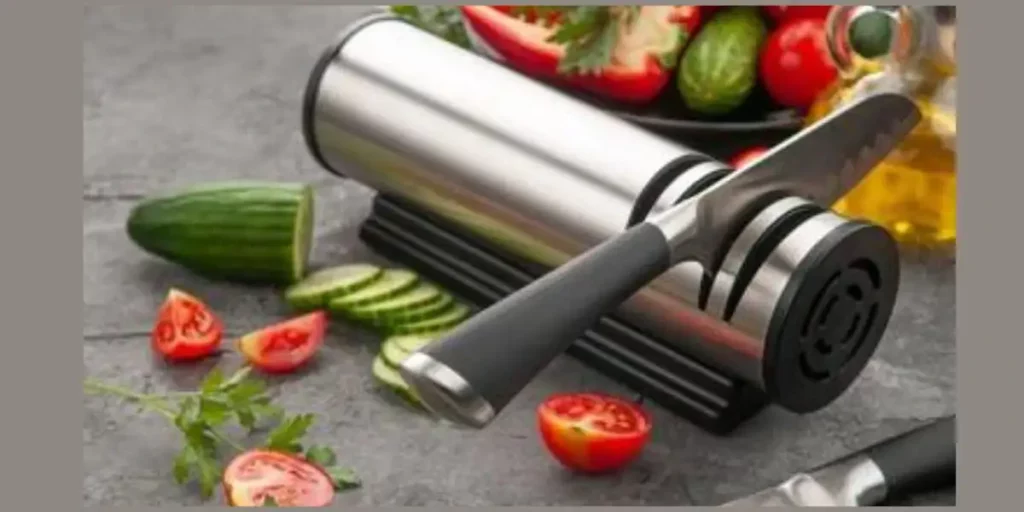
Sharpening a Santoku knife with an electric sharpener can be a straightforward process if you follow the appropriate steps. Here’s a guide to help you sharpen your Santoku knife effectively:
Select the right electric sharpener:
- Ensure that your electric sharpener is suitable for Santoku knives. Check the manufacturer’s instructions to confirm compatibility and any specific settings required for Santoku blades.
Read the manual:
- Familiarize yourself with the electric sharpener’s user manual. Each sharpener may have unique features and instructions, so understanding its functions is crucial for optimal results.
Adjust the sharpening angle.
- Santoku knives typically have a lower angle than some other knife types. If your electric sharpener has adjustable angle settings, set it to the appropriate angle for Santoku knives. Refer to the manufacturer’s recommendations for guidance.
Prepare the knife.
- Ensure that your Santoku knife is clean and free of any debris. Check for any nicks or damage that may require more extensive sharpening or professional attention.
Insert the knife into the sharpening slot.
- Place the Santoku knife into the designated sharpening slot. The blade should be securely positioned with the edge against the grinding wheels or belts.
Start with the coarse grit:
- If your electric sharpener has multiple sharpening stages, start with the coarse-grit stage. This stage is designed for initial sharpening and removing more significant amounts of material. Follow the sharpener’s instructions for this stage.
Run the knife through the sharpener.
- Gently pull the knife through the sharpening slot, maintaining the angle recommended for Santoku knives. Ensure even pressure and a consistent speed for optimal results. Repeat this process as needed, depending on the sharpness of your knife.
Move to Finer Grits (if applicable):
- If your electric sharpener has multiple stages, progress to finer grits for honing and polishing. Follow the same process, pulling the knife through each stage until you achieve the desired sharpness.
Hone the blade (if applicable):
- Some electric sharpeners have a honing stage designed to realign the edge of the blade. If available, run the knife through this stage to improve the knife’s overall sharpness and longevity.
Inspect the edge:
- After sharpening, carefully inspect the edge of the Santoku knife. Ensure that it is uniformly sharp, free of burrs, and meets your desired level of sharpness.
Clean and maintain:
- Clean the knife to remove any metal particles and residue from the sharpening process. Additionally, follow any maintenance guidelines provided by the electric sharpener’s manufacturer.
Alternatives to Electric Sharpeners
Here are certain alternatives:
Whetstones (sharpening stones):
- Description: Whetstones are natural or synthetic stones with varying grit levels.
- Use: Requires manually sliding the knife across the stone at a consistent angle.
- Advantages: Provides precise control over the sharpening process, suitable for achieving a razor-sharp edge.
Honing Rods (Sharpening Steels):
- Description: Honing rods are often used for maintaining the knife’s edge rather than sharpening.
- Use: The knife is drawn along the rod to realign the edge.
- Advantages: quick and easy for regular maintenance, but may not sharpen as effectively as whetstones.
Manual Knife Sharpeners:
- Description: Manual sharpeners come in various designs, including pull-through and handheld models.
- Use: Users manually pull the knife through sharpening slots or across a sharpening surface.
- Advantages: user-friendly, providing a balance between control and convenience.
Sharpening Systems:
- Description: Sharpening systems use guided tools to maintain a consistent angle during sharpening.
- Use: Users follow the system’s instructions to guide the knife through the sharpening process.
- Advantages: Offers precision similar to whetstones but with a more user-friendly approach.
DIY Methods (e.g., Sandpaper, Ceramic Mugs):
- Description: Creative solutions using unconventional materials, like sandpaper or the unglazed bottom of ceramic mugs.
- Use: Users manually sharpen the knife using these improvised tools.
- Advantages: Emergency solutions when traditional sharpening tools are not available, but precision may be limited.
Professional Sharpening Services:
- Description: Services offered by professionals who use specialized equipment to sharpen knives.
- Use: Users send their knives to the service, and professionals handle the sharpening process.
- Advantages: Ideal for those who prefer to leave sharpening to experts or lack the time or tools for DIY methods.
DIY Sharpening Jigs:
- Description: Homemade or commercially available jigs that help maintain a consistent sharpening angle.
- Use: Users secure the knife in the jig and move it across a sharpening surface.
- Advantages: A DIY alternative to sharpening systems, providing angle control.
Conclusion
In conclusion, the art of sharpening knives is a critical skill for any chef or home cook seeking precision and efficiency in the kitchen. While electric sharpeners offer a convenient and automated solution, there are various alternatives, each with its advantages and disadvantages.
Whetstones provide the utmost precision, manual sharpeners offer a user-friendly approach, and honing rods aid in regular maintenance. Sharpening systems and DIY methods cater to specific needs, and professional services ensure expert results. The choice among these alternatives depends on individual preferences, the type of knives being sharpened, and the desired level of control.
Regardless of the method chosen, regular maintenance is key to keeping knives in optimal condition and ensuring a safe and enjoyable culinary experience. Whether you embark on the traditional path of whetstone sharpening or embrace the convenience of electric sharpeners, the goal remains the same: a sharp, reliable edge ready to meet the challenges of the kitchen.
FAQS
Can I use an electric sharpener for sharpening a Santoku knife?
- Not all electric sharpeners are suitable for Santoku knives. It’s important to check the specifications of the sharpener to ensure it is compatible with the unique design and angle requirements of Santoku blades.
What angle should I set the electric sharpener for Santoku knives?
- Ssantoku knives typically have a lower angle than some other knife types. It’s advisable to consult the manufacturer’s recommendations for the specific angle settings suitable for Santoku knives on your electric sharpener.
Will an electric sharpener damage the Granton edge on my Santoku knife?
- The Granton edge, with its series of small divots on the blade, is a distinctive feature of Santoku knives. Some electric sharpeners may be equipped to handle this design, but it’s essential to check the sharpener’s specifications and user manual to ensure it won’t damage the Granton edge during sharpening.
Can I achieve the same level of sharpness with an electric sharpener as with a traditional whetstone?
- While electric sharpeners offer convenience, some enthusiasts argue that traditional whetstones provide the highest level of precision. The choice depends on individual preferences and the desired sharpness of your Santoku knife.
Are there any additional precautions I should take when using an electric sharpener for Santoku knives?
- It’s crucial to follow the manufacturer’s instructions and guidelines for your specific electric sharpener model. Additionally, pay attention to the condition of your Santoku knife, ensuring it is free of debris and any potential damage before using the electric sharpener.

